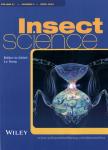Application of DNA barcoding to the identification of Hymenoptera parasitoids from the soybean aphid (Aphis glycines) in China
Application of DNA barcoding to the identification of Hymenoptera parasitoids from the soybean aphid (Aphis glycines) in China作者机构:Key Laboratory of Zoological Systematics and Evolution Institute of Zoology Chinese Academy of Sciences Beijing School of Life Science Anhui University Hefei College of Chemistry and Life Sciences Shenyang Normal University Shenyang plant Protection Institute Heilongjiang Academy of Agricultural Sciences Harbin China
出 版 物:《Insect Science》 (昆虫科学(英文版))
年 卷 期:2014年第21卷第3期
页 面:363-373页
核心收录:
学科分类:0710[理学-生物学] 071001[理学-植物学] 07[理学] 09[农学] 0904[农学-植物保护] 090401[农学-植物病理学] 090402[农学-农业昆虫与害虫防治]
基 金:supported by Public Welfare Project from the Ministry of Agriculture, China the Ministry of Science and Technology of China (MOST) 国家自然科学基金 中国科学院项目
主 题:biological control COl 28S-D2 molecular identification species delimitation
摘 要:Aphis glycines Matsumura is an important pest of soybean in Asia and North America. Hymenoptera parasitoids play a key role in the control of the soybean aphid. Thecorrect identification of parasitoids is a critical step that precedes the assessment of their potential biological control agents. Accurate identification of the majority of the speciesattacking the soybean aphid often requires elaborate specimen preparation and expert taxonomic knowledge. In this study, we facilitated the identification of soybean aphidparasitoids by applying a DNA barcoding approach following a preliminary morphological identification. We generated DNA sequence data from the mitochondrial COI gene andthe D2 region of 28S rDNA to assess the genetic variation within and between parasitoid species emerging from the soybean aphid in China. Fifteen Hymenoptera parasitoid speciesbelonging to 10 genera of five families were identified with little intra-specific variation (0.09% ± 0.06% for 28S and 0.36% ± 0. 18% for COI) and large inter-specific divergence(30.46% ± 3.42% for 28S and 20.4% ± 1.20% for COI).



